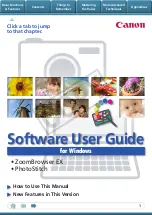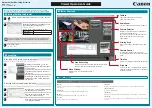
Glossary
Edition: 1.1 03/08/2007
333
SSL
SSL stands for Secure Socket Layer and is a technology that allows a Web server and
client to exchange data via a secure connection.
SMTP
SMTP stands for Simple Mail Transfer Protocol and is a fourth layer protocol
(application layer) of the TCP/IP model. It is used to send email to the SMTP server of
an Internet service provider and from there on through the Internet to the recipient's
inbox. In this way, other SMTP servers can be used as intermediate stations.
SNMP
SNMP is short for Simple Network Management Protocol.
Socket
A socket is a mechanism allowing a virtual connection between two processes. It is
activated using a socket address. The socket address consists of a port number and a
host address.
SPAM
SPAM is defined as unsolicited messages (generally in electronic format) that are sent
to recipients in mass mailings or contain advertising.
TAC
TAC stands for Trunk Access Code. TAC is the number for a tie line.
TCP
TCP stands for Transmission Control Protocol.
TCP is a connection-oriented transmission protocol for use in packet-switched
networks. This protocol is based on IP protocol, supports transport layer functions and
establishes a secure connection between the instances before transferring data.
TLink
TLink is the logical link between the PBX and AES server.
TSTest
TSTest stands for Telephony Services Text Application.
The TSTest application is based on the Avaya CSTA interface.
TTS
TTS stands for Text To Speech. Text is converted to speech.
UDP
UDP is short for User Datagram Protocol.
USB
USB stands for Universal Serial Bus. A term within the Windows 2000 operating
system, USB is a communication standard for plug-and-play serial devices.
UMR
UMR stands for Unified Messaging Routing.
UNC
UNC stands for Universal Naming Convention. UNC is a convention for naming files
and other resources using two backslashes (\) to indicate that the resource is located
on a network computer. The syntax for UNC names is \\SERVERNAME\
ENABLENAME, whereby SERVERNAME stands for the name of the server and
ENABLENAME stands for the name of the enabled resource. The UNC name of a
directory or file can also contain the directory path after the enable name. In this case,
the following syntax applies: \\SERVERNAME\ENABLENAME\DIRECTORYNAME\
FILENAME.
Unicode
Unicode is an international standard that defines a digital code for every meaningful
character or text element of all known writing cultures and character systems over the
long term.
VEA
VEA stands for Voice Extension Adapter. The VEA is responsible for such tasks as
queue announcements.
VDN
VDN stands for Vector Directory Number.
VDN is the topic dial-in number.
Summary of Contents for Customer Interaction Express 1.0
Page 3: ......
Page 4: ......
Page 22: ...22 User Manual CIE 1 0 System Administration...
Page 84: ...84 User Manual CIE 1 0 System Administration...
Page 131: ...Connecting to ACM Avaya Communication Manager Edition 1 1 03 08 2007 131...
Page 154: ...154 User Manual CIE 1 0 System Administration...
Page 174: ...174 User Manual CIE 1 0 System Administration...
Page 216: ...216 User Manual CIE 1 0 System Administration...
Page 226: ...226 User Manual CIE 1 0 System Administration...
Page 318: ...318 User Manual CIE 1 0 System Administration...
Page 322: ...322 User Manual CIE 1 0 System Administration...












































